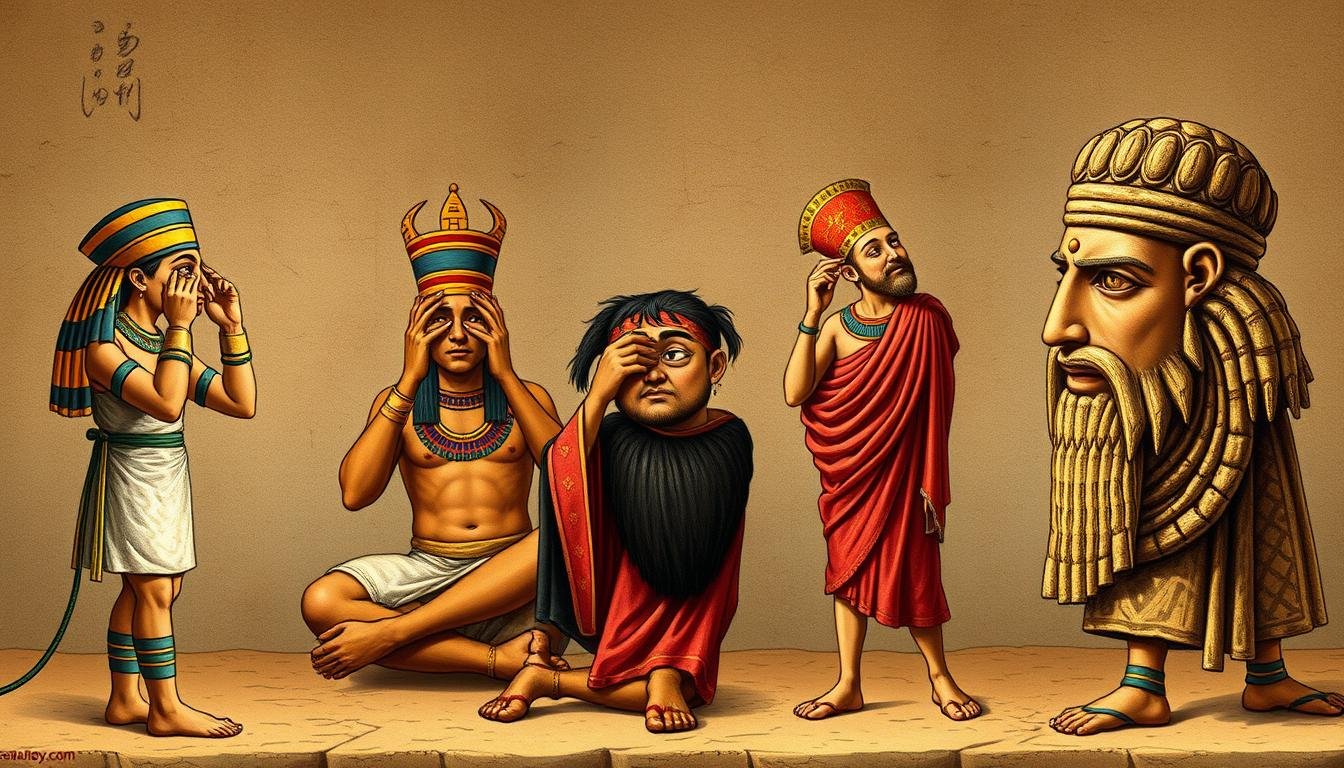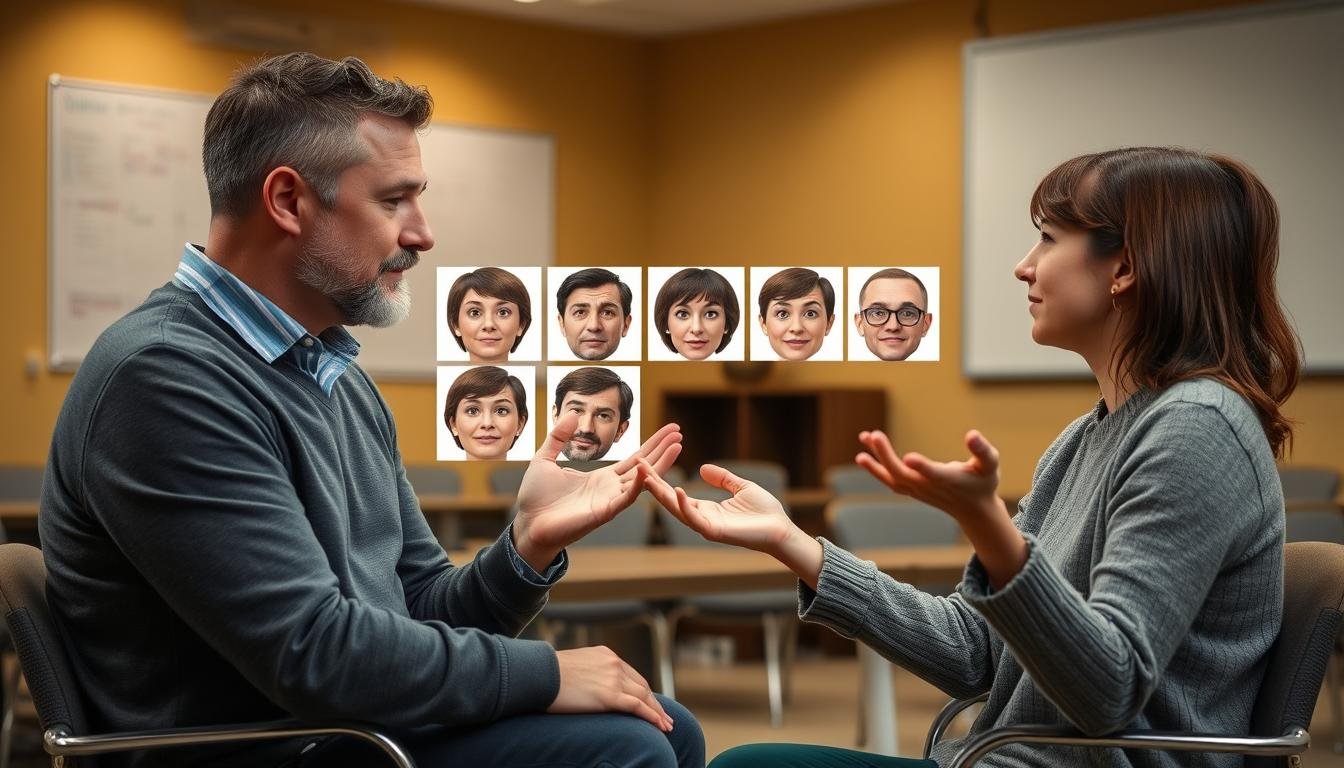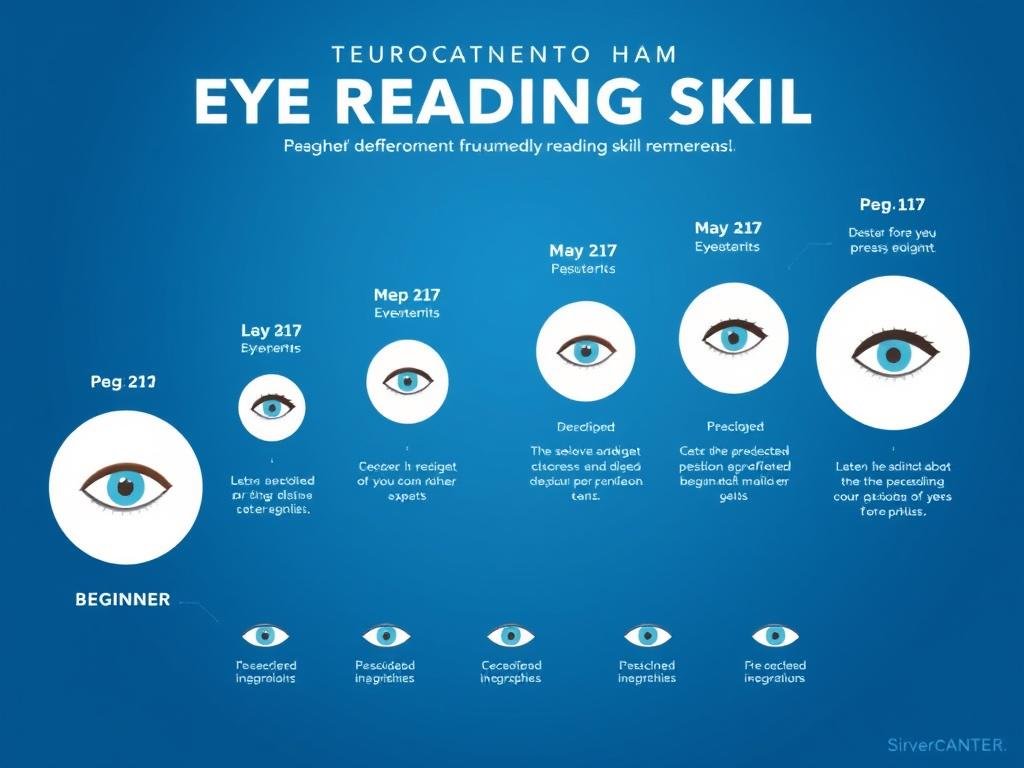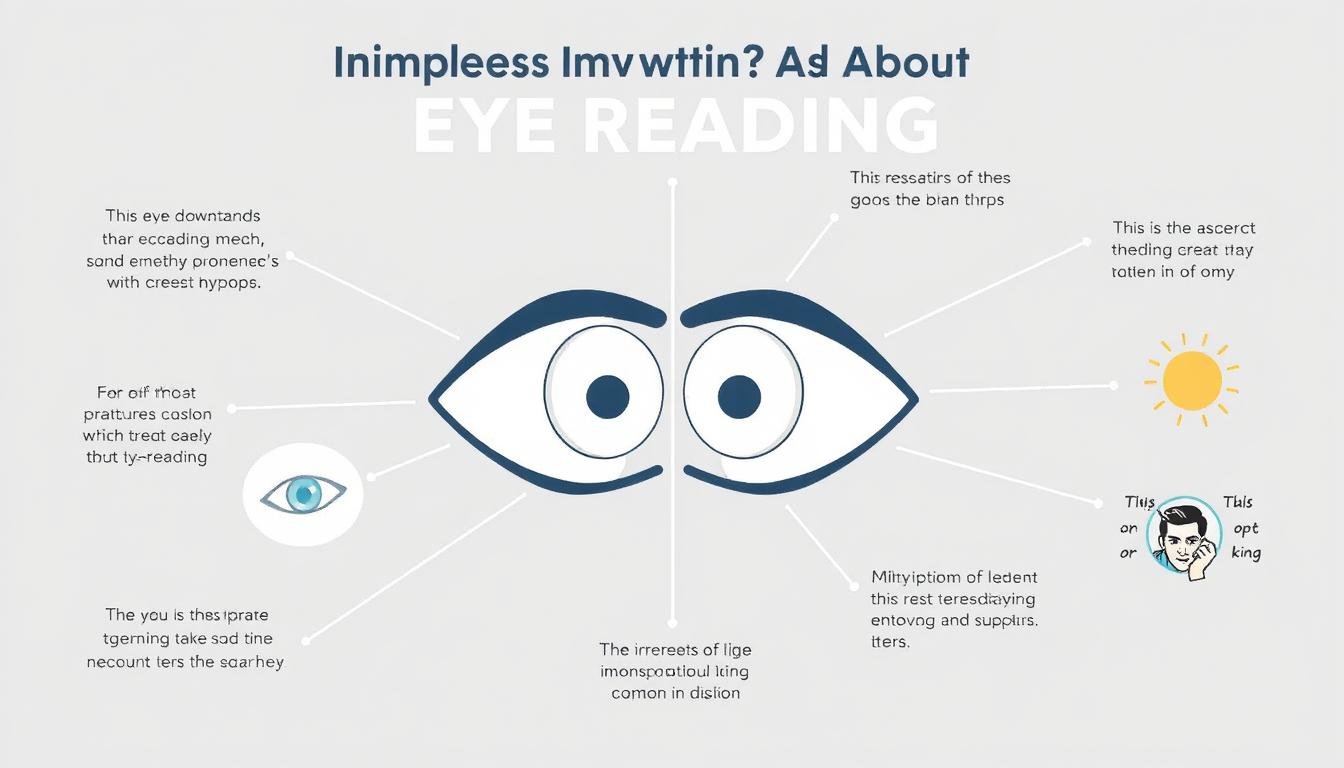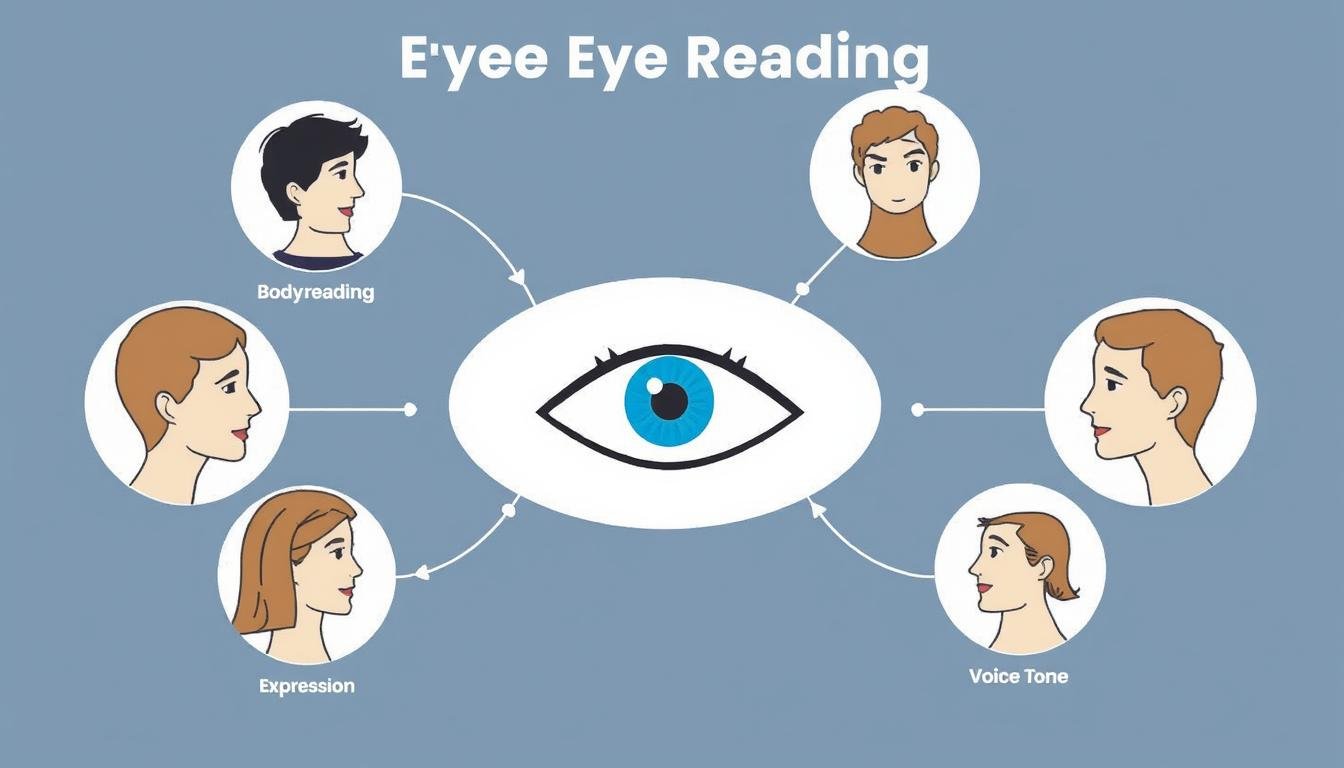Have you ever noticed how someone’s eyes reveal what they’re truly thinking, even when their words say something else? The subtle movements, dilations, and directions of our eyes often communicate more honestly than our carefully chosen words. Eye reading is the art and science of interpreting these visual cues to gain deeper insights into a person’s thoughts, emotions, and intentions. When combined with intuition, it becomes a powerful tool for understanding human behavior and enhancing interpersonal connections.In this comprehensive guide, we’ll explore the fascinating relationship between eye reading and intuitive perception, revealing how you can develop this skill to better understand others and yourself. Whether you’re a professional in a people-oriented field or simply someone who wants to improve your social intelligence, mastering the art of eye reading can transform your interactions and deepen your connections.
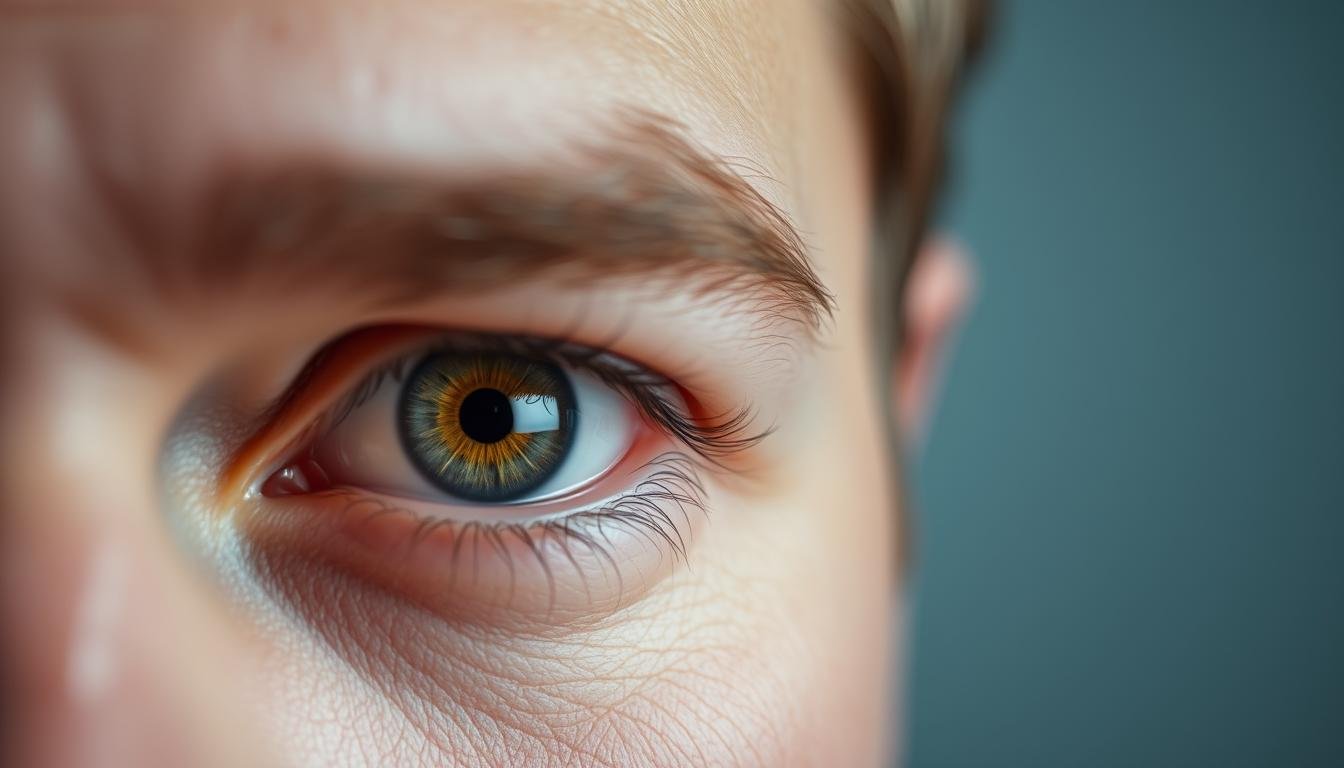
The eyes reveal what words often conceal – a fundamental principle of eye reading
What Is Citirea ochilor and Why It Matters
Eye reading, also known as oculesics, is the study and interpretation of eye movements and visual behavior. Unlike general body language analysis, eye reading focuses specifically on what our eyes communicate through movements, pupil dilation, blinking patterns, and gaze direction. These subtle signals can reveal a wealth of information about a person’s emotional state, level of interest, cognitive processing, and even truthfulness.
The significance of eye reading extends beyond casual observation. Research in neuroscience and psychology has established strong connections between eye movements and brain activity. When we process information, recall memories, or experience emotions, our eyes respond in predictable ways that trained observers can interpret.
“The eyes are the windows to the soul, but they’re also the mirrors of the mind. Through careful eye reading, we can glimpse the cognitive and emotional processes that shape human behavior.”
– Dr. Paul Ekman, Pioneer in Facial Expression Research
The Science Behind Citirea ochilor
Our eyes are controlled by six muscles that respond to both conscious and unconscious neural commands. The unconscious movements are particularly revealing, as they bypass our social filters and directly reflect our internal states. For example:
- Pupil dilation indicates interest, attraction, or cognitive effort
- Rapid blinking often signals stress or discomfort
- Eye movement patterns correlate with specific types of thinking (visual, auditory, kinesthetic)
- Gaze direction can reveal whether someone is recalling or constructing information
- Eye contact duration reflects confidence, connection, or dominance dynamics
These physiological responses are largely automatic, making eye reading a particularly reliable form of nonverbal communication analysis. While other body language can be more easily controlled, our eyes often betray our true thoughts and feelings.
The Intuitive Dimension of Citirea ochilor
Intuition—that sense of knowing without conscious reasoning—plays a crucial role in effective eye reading. While the technical aspects of observing eye movements are important, truly skilled practitioners develop an intuitive understanding that goes beyond mechanical interpretation.
This intuitive dimension of eye reading develops through experience and attunement to subtle patterns. As you practice observing eye behaviors, your brain begins to recognize patterns and make connections below the threshold of conscious awareness. This is where the true power of eye reading emerges—in the integration of systematic observation with intuitive insight.
How Intuition Enhances Citirea ochilor Accuracy
Intuition in eye reading isn’t mystical; it’s the result of your brain processing multiple subtle cues simultaneously. Research in cognitive psychology suggests that experts in any field develop “thin-slicing” abilities—the capacity to make accurate judgments based on minimal information. In eye reading, this manifests as:
Recunoașterea modelului
Experienced practitioners recognize combinations of eye movements that indicate specific mental states, even without conscious analysis of each component.
Contextual Integration
Intuition allows for the integration of eye signals with situational context, verbal content, and other body language cues for a more complete understanding.
Emotional Resonance
Through mirror neurons, we can intuitively sense what another person is feeling by observing their eyes, creating an empathic connection.
Predictive Insight
Developed intuition enables prediction of likely thoughts or behaviors based on subtle eye movement patterns observed in the present moment.
Key Insight: The most effective eye reading occurs when systematic knowledge of eye behaviors is combined with well-developed intuition. Neither alone is as powerful as the integration of both.
Historical and Cultural Context of Citirea ochilor
The practice of eye reading has deep historical roots across diverse cultures. Ancient civilizations recognized the significance of eye movements and gaze patterns in understanding human behavior and intentions.
| Culture/Period |
Eye Reading Practices |
Key Contributions |
| Ancient Egypt |
Eye symbolism in hieroglyphics; eye of Horus |
Connected eyes to spiritual insight and protection |
| Traditional Chinese Medicine |
Iridology and eye diagnosis |
Linked eye appearance to internal organ health |
| Ancient Greece |
Physiognomy including eye analysis |
Aristotle’s writings on eyes as “windows to character” |
| 19th Century Europe |
Scientific study of pupil responses |
Early documentation of pupil dilation as response to interest |
| Modern Psychology |
Neuro-Linguistic Programming (NLP) eye-accessing cues |
Mapped eye movements to cognitive processing modes |
This rich historical context demonstrates that eye reading is not merely a modern concept but a fundamental human practice that has evolved over millennia. Today’s approaches integrate this ancestral wisdom with contemporary scientific understanding.
Common Eye Patterns and Their Intuitive Meanings
Understanding specific eye movement patterns is essential for effective eye reading. These patterns provide valuable clues about cognitive processes, emotional states, and interpersonal dynamics.
Eye Accessing Cues
According to research in Neuro-Linguistic Programming (NLP), specific eye movements correlate with different types of thinking:
| Eye Movement Direction |
Cognitive Process |
Intuitive Insight |
| Up and Right |
Visual Construction (Creating images) |
Person may be imagining or fabricating information |
| Up and Left |
Visual Recall (Remembering images) |
Person is likely accessing genuine visual memories |
| Lateral Right |
Auditory Construction (Creating sounds) |
Person may be formulating what to say next |
| Lateral Left |
Auditory Recall (Remembering sounds) |
Person is likely recalling actual conversations or sounds |
| Down and Right |
Kinesthetic/Feeling Access |
Person is connecting with emotions or physical sensations |
| Down and Left |
Internal Dialogue |
Person is having a conversation with themselves |
Nota: These patterns may be reversed for left-handed individuals. Always calibrate your observations to the specific person you’re interacting with rather than relying solely on general patterns.
Pupil Dilation and Emotional States
Pupil size changes involuntarily in response to emotional arousal and interest levels:
- Dilated pupils: Indicate interest, attraction, cognitive effort, or sympathetic nervous system activation (fight-or-flight response)
- Constricted pupils: Often signal disinterest, dislike, or parasympathetic nervous system activation (rest-and-digest state)
- Fluctuating pupil size: May indicate changing emotional responses or internal conflict
Developing intuitive awareness of these pupil responses can provide immediate feedback about how someone is responding to you or a situation, often before they’re consciously aware of their own reaction.
Aplicații practice ale Citirea ochilor in Daily Life
The skills of eye reading and intuitive interpretation have numerous practical applications that can enhance your personal and professional interactions.
Professional Applications of Citirea ochilor
Negotiation
Detect interest, hesitation, or discomfort through eye cues to adjust your approach and achieve better outcomes.
Leadership
Gauge team members’ genuine reactions to proposals and identify unspoken concerns through eye movement patterns.
Sales
Recognize buying signals through pupil dilation and focused attention to time your closing more effectively.
Personal Applications
Relationships
Deepen connection by recognizing emotional states through eye contact patterns and responding appropriately.
Parenting
Understand children’s unspoken needs by observing their eye movements when they may lack the vocabulary to express themselves.
Self-awareness
Become conscious of your own eye patterns to better understand your internal processes and emotional responses.
Master the Art of Citirea ochilor
Ready to develop your eye reading skills? Our comprehensive guide provides step-by-step techniques, practice exercises, and expert insights to help you become proficient in reading eye movements and enhancing your intuitive abilities.
Download Free Citirea ochilor Guide
Developing Your Citirea ochilor and Intuitive Skills
Like any valuable skill, eye reading requires practice and development. The good news is that with consistent attention and the right approach, most people can significantly improve their ability to read eye patterns and integrate this information with their intuition.
Foundational Exercises for Citirea ochilor
Begin with these basic exercises to develop your observational skills:
- Baseline Observation: Study the normal eye patterns of friends and family to establish their personal baselines. Notice their typical pupil size, blink rate, and gaze patterns during casual conversation.
- Emotional Recognition: Practice identifying basic emotions (happiness, sadness, anger, fear, surprise, disgust) solely through observing the eyes. Cover the rest of the face if necessary to focus your attention.
- Mirror Exercise: Observe your own eyes in a mirror as you recall different types of memories (visual, auditory, emotional). Notice how your eyes move differently with each type of recall.
- Video Analysis: Watch interviews or conversations with the sound off, focusing only on eye movements. Then watch again with sound to check your interpretations.
- Pupil Response Practice: In good lighting, observe how quickly someone’s pupils change when they look at something they like versus something neutral.
Advanced Techniques
Once you’ve mastered the basics, progress to these more sophisticated approaches:
- Congruence Testing: Look for alignment between what someone says and what their eyes communicate. Incongruence often indicates conflicted feelings or potential deception.
- Micro-Expression Detection: Train yourself to notice fleeting eye movements that last for fractions of a second but reveal genuine reactions.
- Cross-Contextual Observation: Compare how someone’s eye patterns change across different contexts (professional vs. social, comfortable vs. stressed).
- Intuitive Integration: Practice making quick assessments based on eye cues, then check your accuracy. This builds your intuitive processing abilities.
Important: Utilizați întotdeauna eye reading skills ethically. The goal is to better understand and connect with others, not to manipulate or invade privacy. Respect cultural differences in eye contact norms and avoid making absolute judgments based solely on eye movements.
Scientific Research Supporting Citirea ochilor and Intuition
The connection between eye reading and intuition is supported by a growing body of scientific research across multiple disciplines.
Constatări cheie ale cercetării
Neuroscience
fMRI studies have demonstrated clear connections between specific eye movement patterns and activation in corresponding brain regions. For example, visual recall activates different areas than visual construction, validating many eye reading principles.
Cognitive Psychology
Research on “thin-slicing” confirms that experts can make accurate judgments based on minimal information, supporting the intuitive dimension of eye reading. Studies show that experienced practitioners achieve significantly above-chance accuracy.
Evolutionary Psychology
Our ability to read subtle eye cues likely evolved as a survival advantage, allowing early humans to detect threats and build social bonds. This explains why many eye reading responses are universal across cultures.
Social Psychology
Studies on nonverbal communication consistently find that eye movements are among the most reliable indicators of internal states, often more trustworthy than verbal content or other body language.
| Research Area |
Key Finding |
Implication for Eye Reading |
| Pupillometry |
Pupils dilate in response to interest, cognitive load, and emotional arousal |
Pupil size provides reliable feedback about engagement and emotional response |
| Eye-tracking Studies |
Predictable patterns in visual attention and gaze duration |
Where and how long someone looks reveals priorities and interests |
| Deception Detection |
Eye movement patterns differ when recalling vs. constructing information |
Eye cues can help assess truthfulness when properly calibrated |
| Mirror Neuron Research |
Observing others’ eye expressions activates similar neural pathways in observers |
Physiological basis for intuitive empathic understanding through eyes |
This scientific foundation validates many traditional eye reading practices while refining our understanding of the mechanisms involved. The integration of research from multiple disciplines provides a robust framework for both the systematic and intuitive aspects of eye reading.
Cultural Variations in Citirea ochilor
While many aspects of eye reading are universal due to shared human physiology, cultural norms significantly influence how eye behaviors are expressed and interpreted.
| Cultural Region |
Eye Contact Norms |
Implications for Eye Reading |
| East Asian Cultures |
Less direct eye contact, especially with authority figures |
Avoidance of eye contact may indicate respect rather than discomfort |
| Middle Eastern Cultures |
Strong eye contact between same gender, more restricted between genders |
Gender dynamics significantly influence eye behavior interpretation |
| Western Cultures |
Direct eye contact valued as sign of honesty and confidence |
Lack of eye contact more likely interpreted as evasiveness |
| Latin American Cultures |
Prolonged eye contact common in conversation |
Sustained gaze indicates engagement rather than confrontation |
| Indigenous Cultures |
Often less direct eye contact, especially when listening |
Looking away may indicate attentive listening rather than disinterest |
Cultural Competence in Eye Reading: Effective eye reading requires cultural context awareness. What constitutes “normal” eye behavior varies significantly across cultures, and misinterpretation can lead to serious misunderstandings.
When practicing eye reading across cultures, it’s essential to establish individual baselines and consider cultural norms before making interpretations. The underlying physiological responses (like pupil dilation) remain consistent, but the expression of eye movements and contact patterns can vary widely.
Studii de caz: Citirea ochilor in Action
Examining real-world examples helps illustrate how eye reading and intuition work together in practice. The following case studies demonstrate the application of these skills in different contexts.
Case Study 1: Business Negotiation
Scenario: A sales director was negotiating a major contract and noticed that whenever she mentioned delivery timelines, the client’s eyes briefly moved down and to the right, followed by increased blinking.
Eye Reading Analysis: The downward-right eye movement suggested accessing feelings (kinesthetic processing), while the increased blinking indicated stress.
Intuitive Integration: The sales director sensed that timeline concerns were causing anxiety for the client, though this wasn’t being verbally expressed.
Action Taken: She proactively addressed potential timeline concerns and offered flexible delivery options.
Rezultat: The client expressed relief and later confirmed that delivery timing had been their primary unstated concern. The contract was successfully secured.
Case Study 2: Therapeutic Setting
Scenario: A therapist noticed that when discussing family relationships, a client maintained steady eye contact but displayed rapid micro-dilations of the pupils.
Eye Reading Analysis: The maintained eye contact suggested comfort with the topic, but pupil dilations indicated emotional arousal or stress.
Intuitive Integration: The therapist sensed an emotional conflict—the client was comfortable discussing the topic intellectually but experiencing strong emotions beneath the surface.
Action Taken: The therapist gently explored the emotional dimension of the family relationships rather than remaining at an intellectual level.
Rezultat: This approach helped the client access and process important emotions that had been intellectualized, leading to a therapeutic breakthrough.
Case Study 3: Parenting Application
Scenario: A parent noticed their teenager’s eyes consistently moving up and left when asked about weekend plans, despite verbal assurances that “nothing special” was happening.
Eye Reading Analysis: The upward-left eye movement pattern suggested visual recall—accessing actual memories rather than creating fiction.
Intuitive Integration: The parent sensed their child was recalling actual plans but choosing not to share them.
Action Taken: Rather than accusing or pressing for details, the parent opened a conversation about trust and safety while respecting privacy.
Rezultat: The teenager eventually shared plans to attend a concert they feared wouldn’t be approved. This led to a productive conversation about boundaries and communication.
“The most powerful eye reading occurs when systematic observation meets intuitive understanding. Neither alone tells the complete story.”
– Dr. Linda Martinez, Nonverbal Communication Researcher
Common Misconceptions About Citirea ochilor
Despite its scientific basis, eye reading is often misunderstood or oversimplified. Addressing these misconceptions is important for developing accurate skills.
Facts About Eye Reading
- Eye movements correlate with cognitive processes but aren’t absolute indicators
- Individual baselines must be established for accurate reading
- Cultural context significantly influences interpretation
- Effective eye reading combines systematic knowledge with intuitive processing
- Pupil responses are largely unconscious and difficult to fake
Myths About Eye Reading
- Looking up and right always indicates lying
- Lack of eye contact automatically signals deception
- Eye reading alone is sufficient for lie detection
- Everyone follows the same eye movement patterns
- Eye reading is a mystical or psychic ability rather than a learnable skill
Can eye reading definitively detect deception?
No single eye pattern definitively indicates deception. While certain patterns correlate with constructing rather than recalling information, these must be considered alongside other factors. Even professional lie detection experts use multiple indicators and achieve accuracy rates of 65-80%, not 100%. Eye reading is a valuable tool but not an infallible lie detector.
Do eye movements follow the same patterns for everyone?
While there are general patterns, individual variations exist. Factors like handedness, neurological differences, cultural background, and personal history can all influence eye movement patterns. Effective eye reading requires establishing individual baselines rather than applying universal templates.
Is eye reading an innate ability or can it be learned?
Eye reading is definitely a learnable skill. While some people may have natural aptitude due to heightened observation skills or sensitivity to nonverbal cues, anyone can improve their ability through structured practice and feedback. Both the systematic knowledge and intuitive aspects can be developed with consistent effort.
Ethical Considerations in Citirea ochilor
As with any powerful interpersonal tool, eye reading comes with ethical responsibilities. Understanding these ethical dimensions is essential for responsible practice.
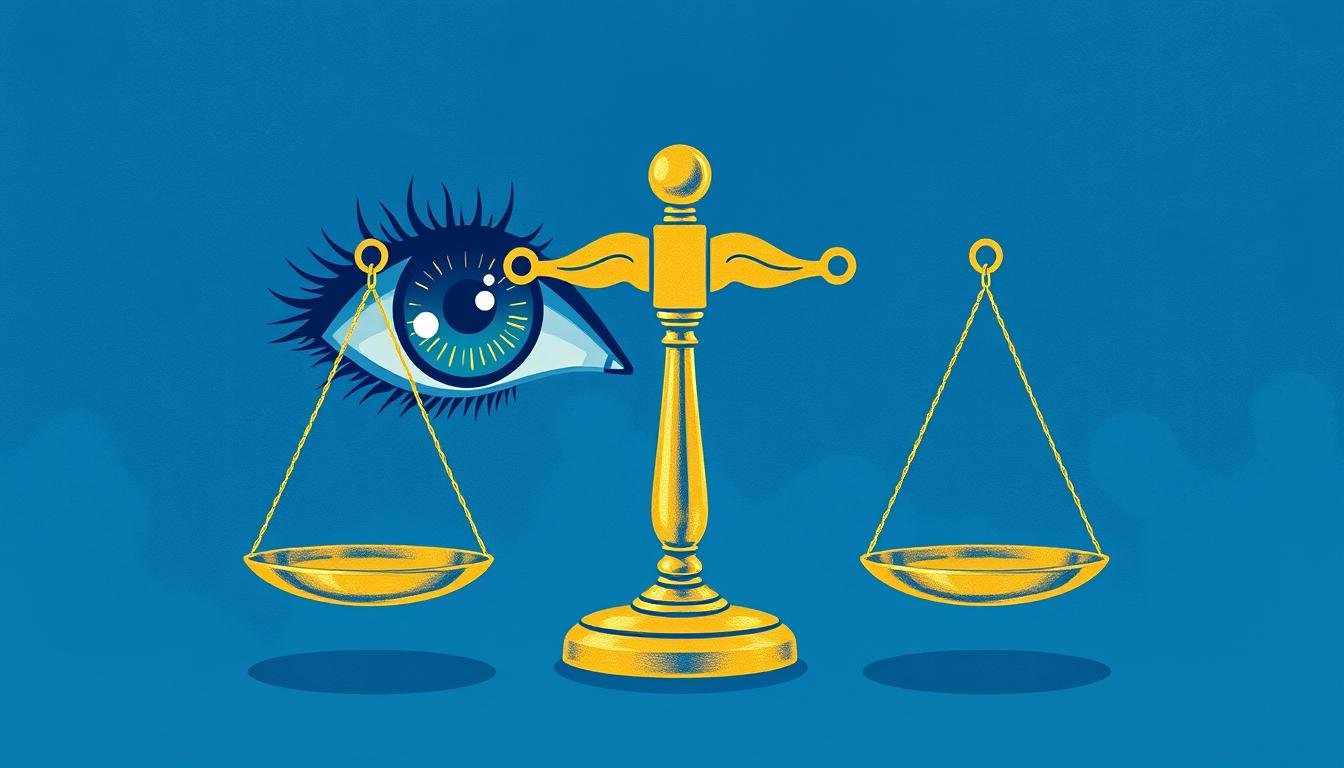
- Respect for Privacy: Just because you can read someone’s eye patterns doesn’t mean you should in every situation. Consider contexts where people have a reasonable expectation of privacy in their thoughts and feelings.
- Informed Consent: In professional applications, it’s often appropriate to inform people that you’re trained in nonverbal communication analysis, particularly in therapeutic or assessment contexts.
- Avoiding Manipulation: Eye reading skills should be used to enhance understanding and connection, not to manipulate or exploit others’ unconscious responses.
- Cultural Sensitivity: Recognize that eye behavior norms vary across cultures, and avoid ethnocentric interpretations that may lead to misunderstandings or prejudice.
- Maintaining Humility: Even experts make mistakes in interpretation. Maintain appropriate doubt about your conclusions and be willing to revise interpretations based on new information.
“With the power to read others comes the responsibility to respect their dignity. Eye reading should bring people closer together through understanding, not create distance through judgment.”
– Ethics in Nonverbal Communication Handbook
Important: In professional contexts where eye reading may influence significant decisions (hiring, legal proceedings, clinical diagnosis), be particularly cautious about overreliance on these techniques. They should complement, not replace, other forms of assessment.
Integrarea Citirea ochilor with Other Intuitive Skills
Eye reading is most powerful when integrated with other forms of nonverbal communication analysis and intuitive skills. This holistic approach creates a more complete understanding of interpersonal dynamics.
Complementary Skills
Facial Micro-expressions
Combine eye pattern analysis with recognition of fleeting facial expressions that reveal genuine emotions, often lasting less than 1/5 of a second.
Body Language Analysis
Integrate eye cues with broader body language patterns to identify congruence or incongruence between different nonverbal channels.
Paralinguistic Awareness
Notice how voice tone, pace, and volume correlate with eye patterns to develop a more complete picture of internal states.
Intuitive Development Practices
These practices enhance your ability to integrate eye reading with intuitive processing:
- Mindfulness Meditation: Regular meditation enhances your ability to remain present and notice subtle cues without judgment.
- Journaling: Record your observations and intuitive impressions, then check their accuracy over time to refine your skills.
- Pattern Recognition Games: Activities that strengthen your ability to quickly identify patterns help develop the neural networks used in intuitive eye reading.
- Feedback Loops: Practice with partners who can provide honest feedback about the accuracy of your interpretations.
- Cross-Contextual Practice: Apply your skills across diverse settings to develop flexibility and avoid context-specific biases.
Join Our Citirea ochilor Community
Connect with fellow practitioners to share experiences, practice techniques, and receive expert guidance on developing your eye reading and intuitive skills.
Join the Community
Conclusion: The Transformative Power of Citirea ochilor
The connection between eye reading and intuition represents a powerful intersection of science and human connection. By developing your ability to read and interpret eye patterns while cultivating your intuitive processing, you gain access to a deeper level of interpersonal understanding.
This journey into eye reading is both intellectual and intuitive—requiring both systematic knowledge and developed sensitivity. As you practice these skills, you’ll likely find that your connections with others deepen, your understanding of human behavior expands, and your own self-awareness grows.
Remember that eye reading is not about gaining power over others but about creating more authentic and meaningful connections. When approached with respect, curiosity, and ethical awareness, these skills can transform your personal and professional relationships.
“The eyes may be the windows to the soul, but it takes both knowledge and intuition to truly see through them. In that seeing lies the possibility of genuine human connection.”
Take Your Citirea ochilor Skills to the Next Level
Ready to master the art and science of eye reading? Our comprehensive guide includes advanced techniques, practice exercises, and expert insights to help you develop professional-level skills.
Download Advanced Citirea ochilor Guide
















